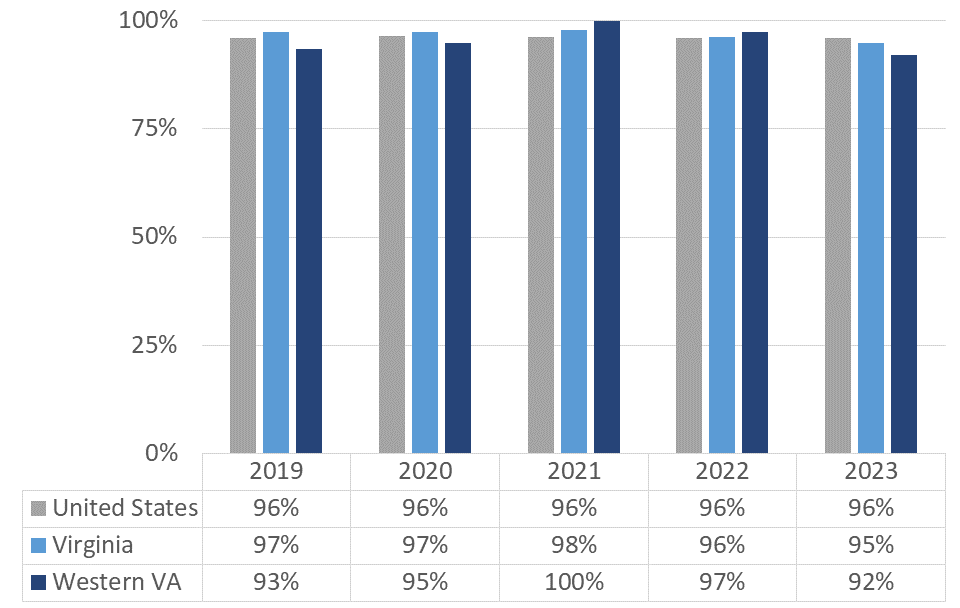Gauging our progress in preventing and ending homelessness
System performance measures (SPMs) enable our community to evaluate and improve our performance by identifying gaps in data and services. Additionally, HUD carefully considers performance measure data as selection criteria for awarding grants under the CoC program.
For more information and guidance about these standard measures, visit the HUD Exchange.
Using public data from CoCs across the country, the following sections outline how the Western Virginia CoC compares to state and national averages over time and explains what our CoC is doing to improve its performance for the future.
1: Length of Stay
Average length of stay (in days) at emergency shelters
Length of stay increased from 2019-2022, with a 10% decrease in 2023. Throughout this period, average length of stay in the Western Virginia CoC has remained largely at or below national and state levels.
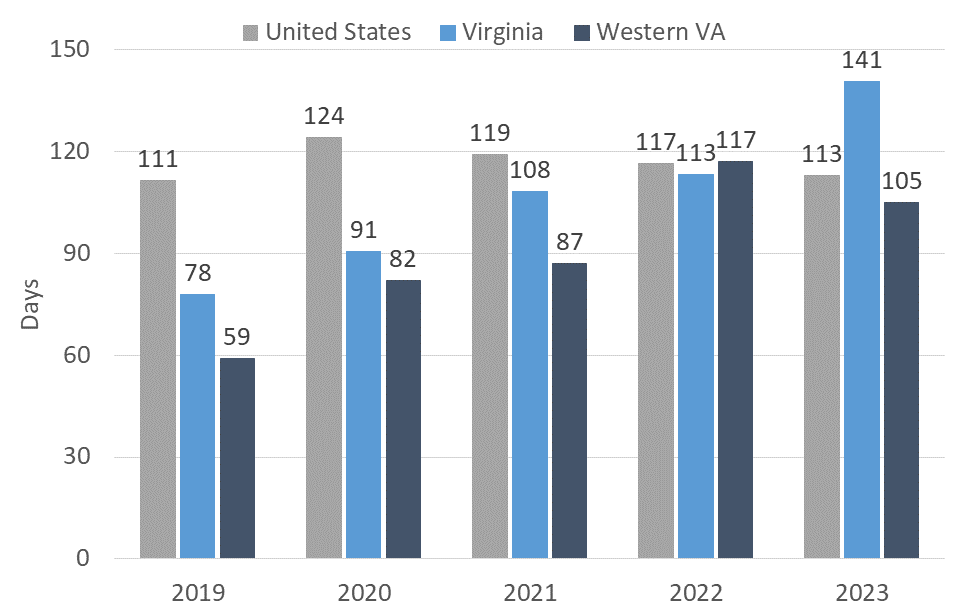
2: Returns
Percent of people housed in the prior 24 months who returned to homelessness (lower is better)
Returns to homelessness have been lower in the Western Virginia CoC than the state and national rates. The highest rate was in 2022, with a decrease in 2023.
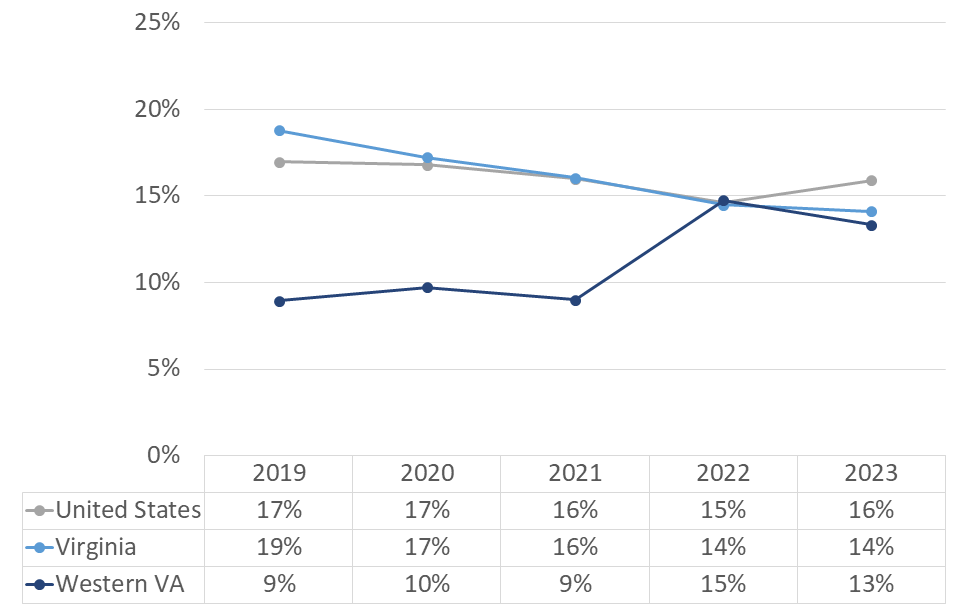
3: HMIS Counts
Number of people enrolled in emergency shelter programs in HMIS
The number of people enrolled in emergency shelter programs peaked from 2020 to 2022, with significant annual increases throughout the period of the Covid-19 pandemic and associated increase in funding for emergency hotel/motel vouchers. 2023 experienced a dramatic decrease in emergency shelter enrollments. This reflects a reduction in overall supply as voucher funding ended and does not reflect a decrease in the need for shelter (see PIT count data over time for context).
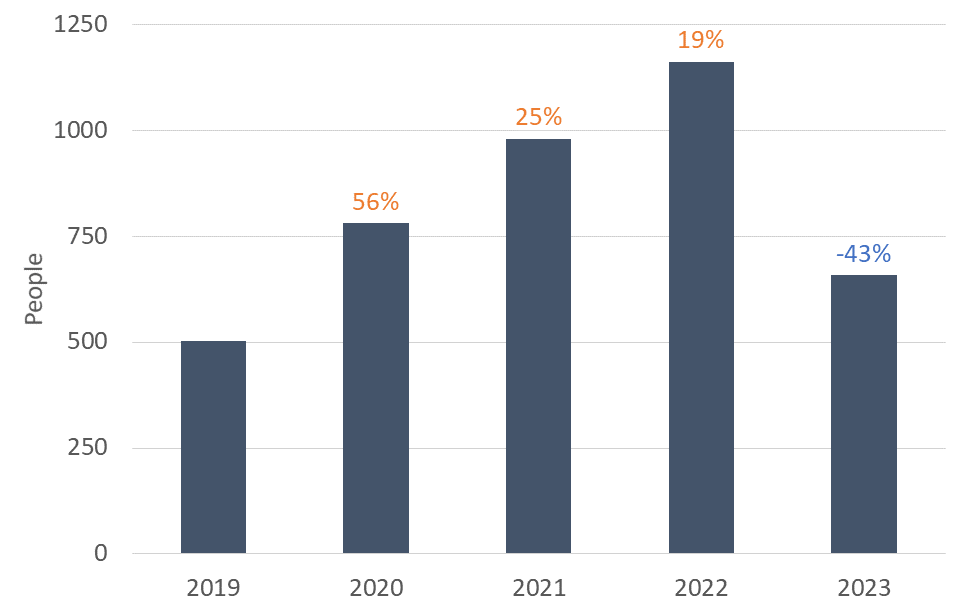
4: Increased Income
Percent of people staying in permanent housing programs who increased their total income
The Western Virginia CoC has consistently out-performed state and national averages since 2020 for people who remain in permanent housing placements, indicating a consistent connection to mainstream benefits and supportive resources that extend beyond housing.
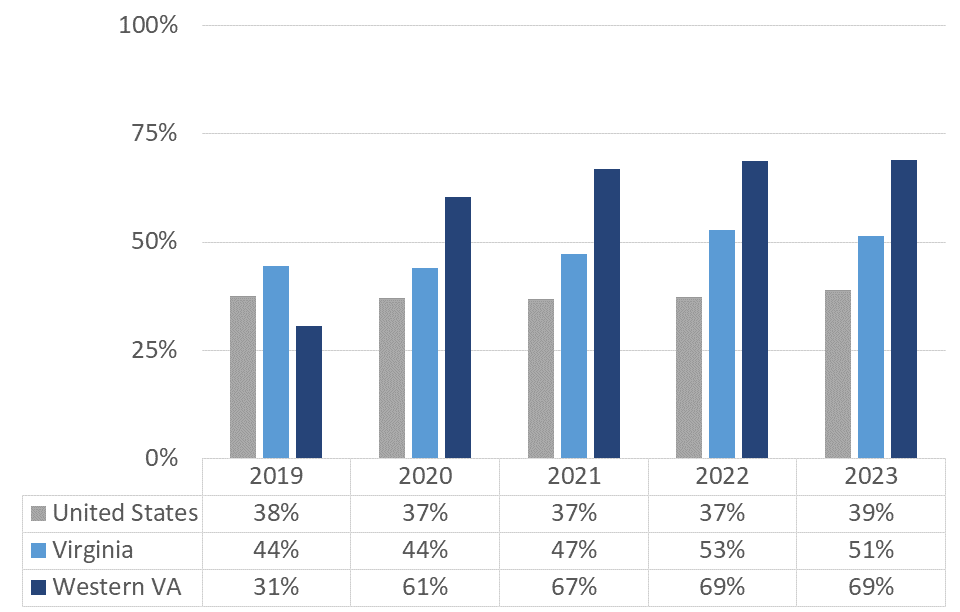
Percent of people leaving permanent housing programs who increased their total income
The Western Virginia CoC has steadily improved the total income outcomes of people who exit permanent housing placements. In 2022 our CoC reached levels equal to that of state and national rates, and in 2023 the rate of people exiting with increased total incomes is twice the national level.
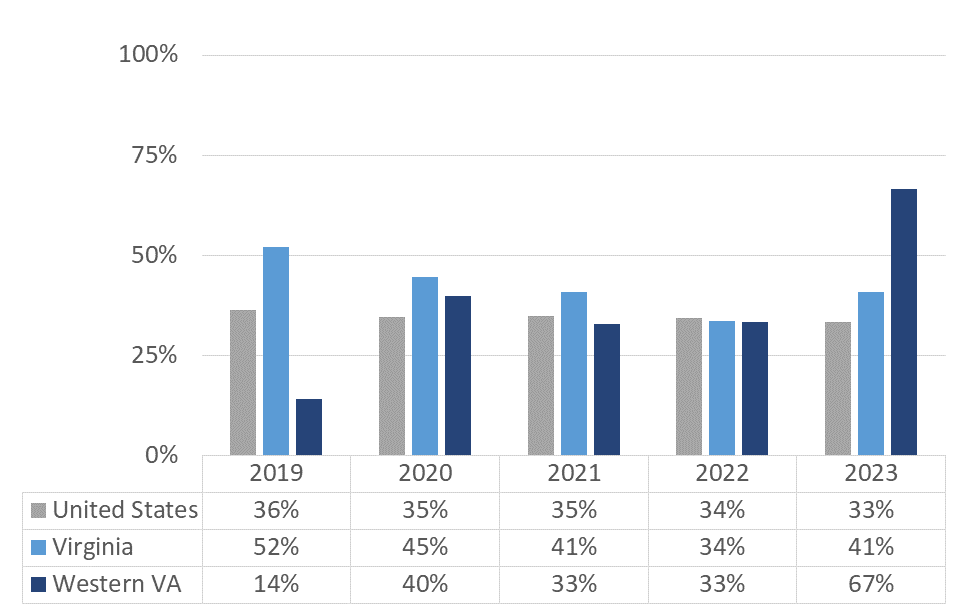
Percent of people leaving permanent housing programs who increased their earned income
Due to small numbers of people exiting permanent housing placements each year (<10) and the small share of people in permanent supportive housing programs with earned income, the Western Virginia CoC has not recorded any increases in earned income alone for this time period.
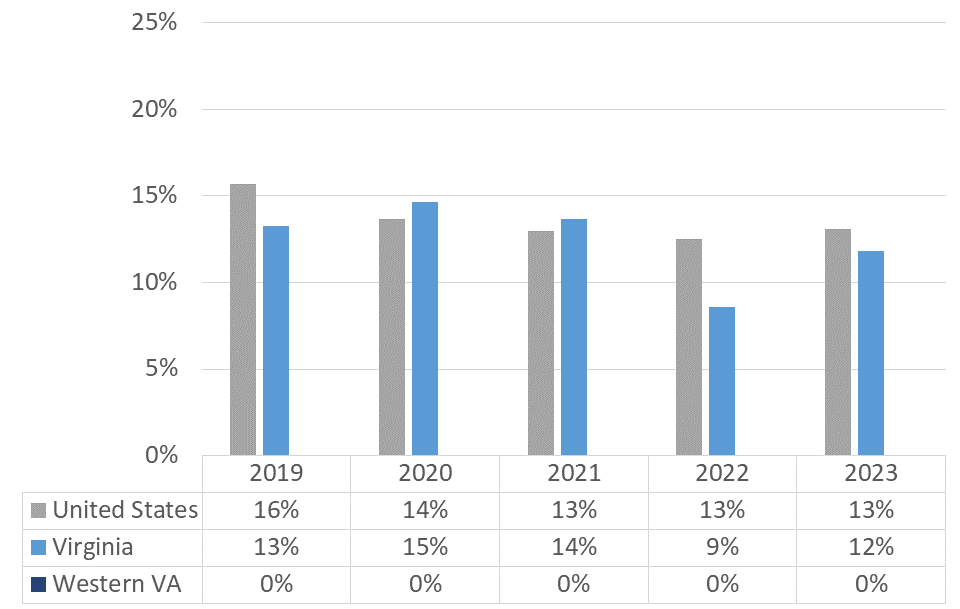
5: First-time homelessness
Percent of the total people in HMIS (SPM #3) who were experiencing homelessness for the first time
The Western Virginia CoC has had consistently higher rates of first-time homelessness than state and national levels, with a dip in 2022 and increase in 2023.
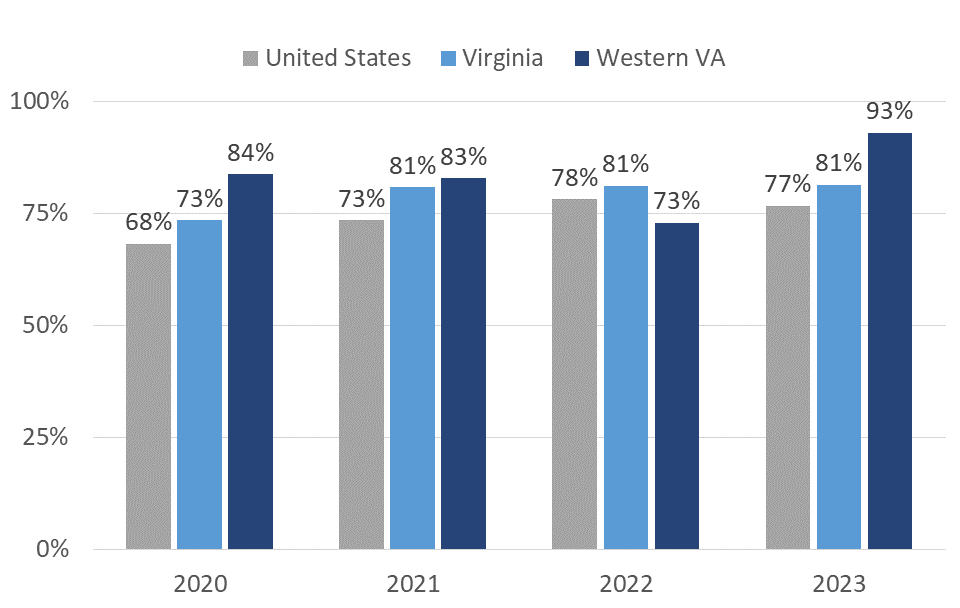
6: Prevention
This metric is not used to measure CoCs because HUD has not authorized any CoC to serve the homeless under Category 3. HUD determines and approves the use of CoC Program funds to serve this population based on each CoC’s Consolidated Application. For more information, visit the HUD Exchange.
7: Successful Exits
Percent of exits from shelter and rapid rehousing programs to permanent housing destinations
The Western Virginia CoC has been consistent with state and national levels regarding housing outcomes for people exiting emergency shelters and rapid rehousing programs. In 2023, the CoC outperformed both state and national rates with a 50% positive destination rate.
Percent of exits from permanent supportive housing programs to permanent housing destinations
The Western Virginia CoC has been relatively consistent with state and national levels regarding positive destinations from permanent supportive housing programs. However, a slight decrease in 2023 from 97% to 92% is a topic of focus for ongoing support and retention in the coming year.
Percent of exits from street outreach programs to temporary or permanent housing destinations
For the past two years, the Western Virginia CoC has performed below state and national levels for street outreach outcomes recorded in HMIS. This may be due to a high number of “unknown/disappeared” outcomes (see “Data Quality”) and is a focus for program improvement for the coming year.
Data Quality
Rate of exit destinations that are “Unknown/Disappeared” in HMIS
Clients in the Western Virginia Continuum of Care have been consistently marked as “unknown/disappeared” at a higher rate than the state and national levels and an increase in 2022-2023. This is an opportunity for education among providers to record accurate exit destination information.
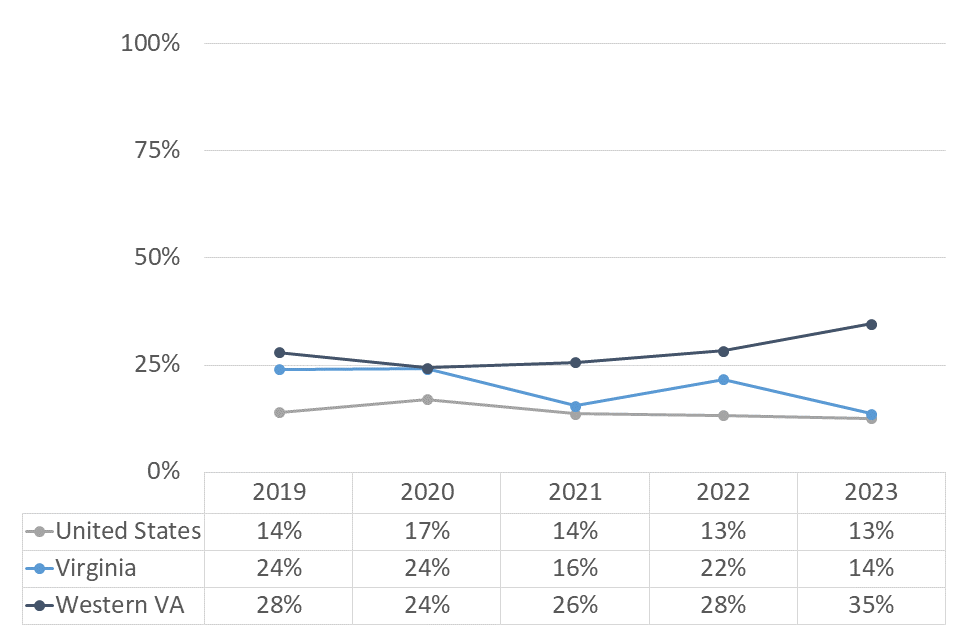
Percent of shelter beds that are recorded in HMIS
The Western Virginia Continuum of Care has had a consistently lower rate of participation in HMIS among shelter beds. This was identified as a priority to address, and preliminary data suggests that the CoC will achieve a rate similar to state and national averages (above 90%) by 2024.
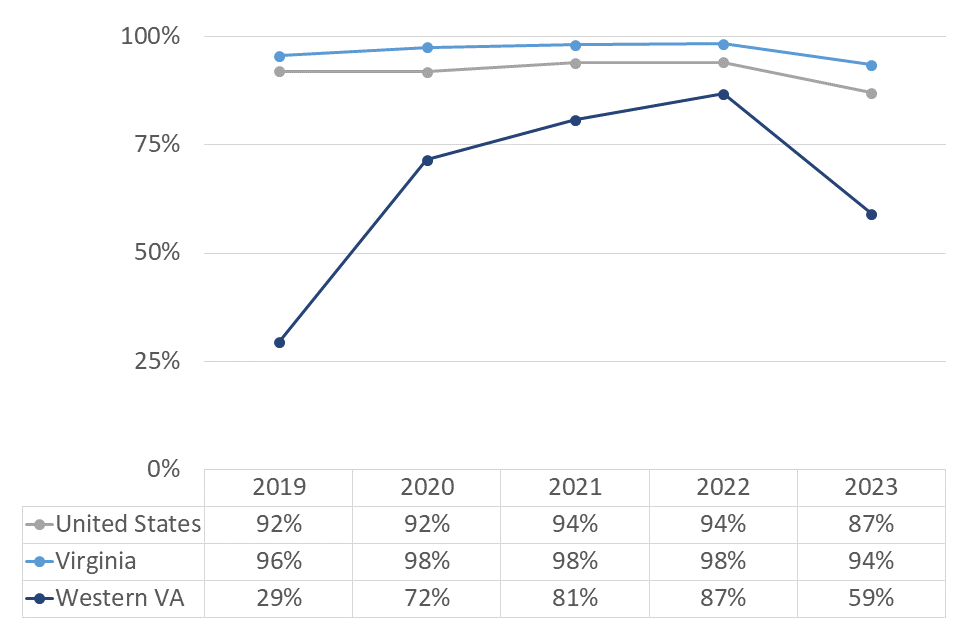
If you have questions or want to learn more about the information on this page, please fill out a data request form or contact the HMIS Administrator directly.


